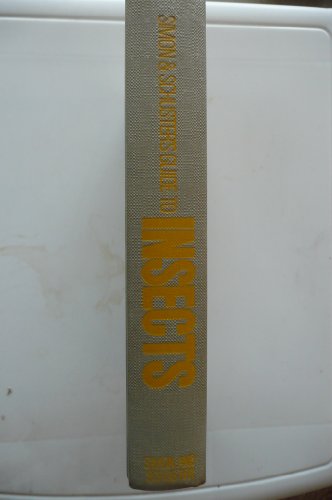Items related to Simon And Schuster's Guide to Insects (Fireside...

"synopsis" may belong to another edition of this title.
Chapter 1
1 ORCHESELLA CINCTA
Slender Sphagnum Springtail
Family Entomobryidae
Order Collembola
Length ± 1.8 mm.
Recognition marks Pale yellow to blackish purple; antennae are 6-segmented. This group is very distinctive because of the large fourth abdominal segment, at least twice the length of the third segment as seen from dorsal view.
Habitat Found on sphagnum moss growing in woodland pools.
Distribution This species belongs to a family of 138 species in northeastern United States and Canada.
Note Springtails are among the most abundant of insects, yet they are very seldom seen by nonprofessional collectors. Nearly any moist soil sample will yield hundreds of individuals. If you watch the activity going on in a bowl containing wood's moss, you will see these creatures plying their way through the vegetation. Springtails undoubtedly are a main food source for many small beetle larvae and for centipedes. Very few details are known about their lives. It is known that the males place spermatophores in strategic positions on the soil so that the females will encounter them. She engulfs these gelatinous masses into her reproductive tract where the sperm are released and fertilize her eggs.
2 ACERELLA BARBERI
Soil Proturan
Family Acerentomidae
Order Protura
Length ± 1.8 mm.
Recognition marks Body white; front pair of legs projected forward and used as sense organs rather than for locomotion.
Habitat Soil; these insects are seldom seen.
Distribution Poorly known, probably throughout eastern North America.
Note These primitive insects need further study. Some authorities do not consider them to be insects but a separate group by themselves. They show some relationship to the springtails. Spiracles and Malpighian tubules (excretory organs), both characteristic of insects, are absent in this and similar species of the order. In addition, unlike "true" insects, they add abdominal segments during each molt. Other insects have a complete complement of segments upon hatching.
3 THERMOBIA DOMESTICA
Silverfish
Family Lepismatidae
Order Thysanura
Length ± 12 mm.
Recognition marks Uniformly slate gray; body is covered with scales; eyes are small with separate elements.
Habitat Warm, humid places, including home, but also in the wild in southern Florida and in other tropical regions.
Distribution Cosmopolitan.
Note This species is often a pest in homes and libraries. It feeds on starchy materials, such as glue, but requires high humidity. It can be reared in glass jars where it will feed on oatmeal and other starchy foods. Potatoes will provide the necessary water. Do not let it mold or let the jar get too dry. Other species of this poorly known order can be captured in the wild. They are found in leaf litter and among rocks and in debris along the shore. These insects are considered to be very primitive, perhaps the most primitive of living forms. The appendages on the ventral surface of the abdomen are one indication of this even though these are not functional locomotive appendages. Silverfish might well be considered living fossils; they are much older than the dinosaurs.
4 HOLJAPYX DIVERSIUNGUS
Slender Dipluran
Family Japygidae
Order Diplura
Length 8-10 mm.
Recognition marks Elongate; pale tan, with central portion of each abdominal segment darker, apical segment dark brown, with a pair of stout forceps.
Habitat Soil-inhabiting species.
Distribution Widespread, but local, spotty distribution.
Note Although all of these primitive wingless insects are rather small and devoid of attractive colors, they are worthy of study if for nothing more than the fact that so little is known about them. The wingless primitive insect pictured at the introduction to this section is a wild thysanuran. They are fast runners. They must be closely examined to distinguish them from the nymphs of some other order. Perhaps this is why they have been overlooked for so long.
Copyright © 1981 by Simon & Schuster Inc.
"About this title" may belong to another edition of this title.
- PublisherSimon & Schuster
- Publication date1981
- ISBN 10 0671250132
- ISBN 13 9780671250133
- BindingHardcover
- Edition number1
- Number of pages512
- Rating
Buy New
Learn more about this copy
Shipping:
FREE
Within U.S.A.
Top Search Results from the AbeBooks Marketplace
Simon And Schuster's Guide to Insects (Fireside Book)
Book Description Hardcover. Condition: New. Seller Inventory # Abebooks104638
Simon And Schuster*s Guide to Insects (Fireside Book)
Book Description Hardcover. Condition: New. New. book. Seller Inventory # D7S9-1-M-0671250132-6

